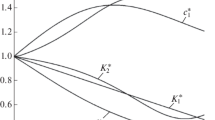Abstract
This paper focuses on the study of the relationships between brake disc surface temperatures and disc distortion for various high-energy stop-braking conditions. An original thermal metrology method combining an infrared camera and a fibre-optic two-colour pyrometer was used to record the spatial and temporal variation in disc surface temperature during braking. Disc distortion was investigated in situ by means of a high-frequency displacement sensor. In addition, an optical trigger kept track of disc revolutions and enabled the synchronization of the IR camera, two-colour pyrometer and displacement sensor measurements. This experimental set-up was successfully used to determine the surface temperature and investigate thermal localization and waviness distortion during braking. The results were correlated with each other in relation to the level of energy dissipation. It was shown that the highest temperature was reached in the hot spot regions at an early stage of stop-braking. By contrast, the greatest disc distortion appeared much later, during the last stage of stop-braking.












Similar content being viewed by others
References
Kennedy, F.E.: Thermal and thermomechanical effects in dry sliding. Wear 100(1–3), 453–476 (1984)
Dufrénoy, P., Bodovillé, G., Degallaix, G.: Damage mechanisms and thermo-mechanical loading of brake discs. Eur. Struct. Integrity Soc. 29, 167–176 (2002)
Jacobsson, H.: Aspects of disc brake judder D12302©IMechE 2003. Proc. Instn Mech. Engrs D: J. Automob. Eng. 217(6), 419–430 (2003)
Benillouche, F., Pajani, D., Bremond, P., Potet, P.: Thermographie infrarouge d’objets tournant à grande vitesse. Ingénieurs de L’automobile 667, 51–53 (1992)
Majcherczak, D., Dufrenoy, P., Berthier, Y., Nait-Abdelaziz, M.: Experimental thermal study of contact with third body. Wear 261, 467–476 (2006)
Cartigny, F., Copin, R., Siroux, M., Harmand, S., Desplanques, Y., Degallaix, G.: Cartographies d’émissivité de la surface d’un disque de frein. Congrès SFT, Lyon, 351–356 (2000)
Desmet, B., Siroux, M., Cartigny, F., Harmand, S., Desplanques, Y., Degallaix, G.: Métrologie thermique du contact en freinage. In: European conference on braking JEF, Lille, 369–376 (2002)
Thevenet, J., Siroux, M., Desmet, B.: Measurements of brake disc surface temperature and emissivity by two-color pyrometry. Appl. Therm. Eng. 30, 753–759 (2010)
Kasem, H., Thevenet, J., Boidin, X., Siroux, M., Dufrénoy, P., Desmet, B., Desplanques, Y.: An emissivity-corrected method for the accurate radiometric measurement of transient surface temperatures during braking. Tribol. Int. 43, 1823–1830 (2010)
Kao, T.K., Richmond, J.W., Douarre, A.: Brake disc hot spotting and thermal judder: an experimental and finite element study. Int. J. Veh. Des. 23(3/4), 276–296 (2000)
Abdelhamid, M.K.: Brake judder analysis: case studies. SAE paper 972027 (1997)
Brooks, P.C., Barton, D., Crolla, D.A., Lang, A.M., Schafer, D.R.: A study of disc brake judder using a fully coupled thermo-mechanical finite element model. In: Proceedings, 25th FISITA congress, Beijing. SAE paper 945042, 340-349 (1994)
Vries, A., Wagner, M.: The brake judder phenomenon. SAE Trans., Sect 6(101), 652–660 (1992)
Desplanques, Y., Degallaix, G., Copin, R., Berthier, Y.: A tribometer for the study of materials under railway braking conditions. In: Dalmaz, G., et al. (eds.) Tribology Research: From Model Experiment to Industrial Problem, pp. 381–391. Elsevier, Amsterdam (2001)
Desplanques, Y., Roussette, O., Degallaix, G., Copin, R., Berthier, Y.: Analysis of tribological behaviour of pad-disc contact in railway braking. Part 1. Laboratory test development, compromises between actual and simulated tribological triplets. Wear 262, 582–591 (2007)
Kasem, H., Brunel, J.-F., Dufrénoy, P., Siroux, M., Desmet, B.: Thermal levels and subsurface damages induced by the occurrence of hot spots during high energy braking. Wear 270, 355–364 (2011)
Kasem, H., Dufrénoy, P., Desplanques, Y., Siroux, M., Desmet, B.: On the use of fluorine as infrared transparent first body for in situ temperature measurement in sliding contact. Tribol. Lett. 42, 27–36 (2011)
Lee, K., Barber, J.R.: An experimental investigation of frictionally-excited instability in automotive disk brakes under a drag brake application. J. Tribol. 116, 409–414 (1994)
Cristol-Bulthé, A.-L., Desplanques, Y., Degallaix, G.: Coupling between friction physical mechanisms and transient thermal phenomena involved in pad-disc contact during railway braking. Wear 263, 1230–1242 (2007)
Sarda A., Haag M., Winner H.: Experimental investigation of hot spots and thermal judder. SAE paper 08BC-0060 (2008)
Panier, S., Dufrénoy, P., Brunel, J.-F., Weichert, D.: Progressive waviness distortion: a new approach of hot spotting in disc brakes. J. Thermal. Stress. 28(1), 47–62 (2005)
Acknowledgments
This research study has been supported by the International Campus on Safety and Intermodality in Transportation, the Nord-Pas-de-Calais Region, the European Community, the Regional Delegation for Research and Technology, the Ministry of Higher Education and Research, and the National Centre for Scientific Research.
Author information
Authors and Affiliations
Corresponding author
Rights and permissions
About this article
Cite this article
Kasem, H., Dufrénoy, P. & Desplanques, Y. Relationships Between Surface Thermal Gradients and Disc Distortion During Stop-Braking with High Energy Dissipation. Tribol Lett 48, 169–181 (2012). https://doi.org/10.1007/s11249-012-0003-z
Received:
Accepted:
Published:
Issue Date:
DOI: https://doi.org/10.1007/s11249-012-0003-z




